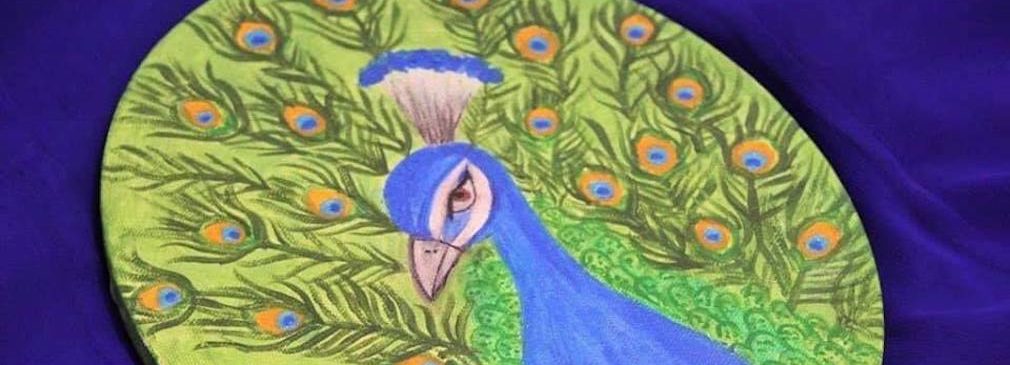
Share
Being an educator and jewelry designer from Dallas, Texas, I enjoy learning about different cultures, art, people and languages from around the world.
My passion for designing environmentally-friendly art jewelry began when I experimented with various media for art at my home-based art studio. Being born and raised in the city of Thanjavur, one of the ancient cities in India, I have been inspired by its symbolic culture and heritage. Hence, I decided to incorporate aspects of the city by creating exquisite motifs in the jewelry I make, which I believe will make the wearers proud to represent their native land. Additionally, the pieces include beautiful motifs of fauna, flora and native souvenirs (for example, the dancing doll) that are close to their hearts, and are also made using sustainable (eco-friendly) materials.
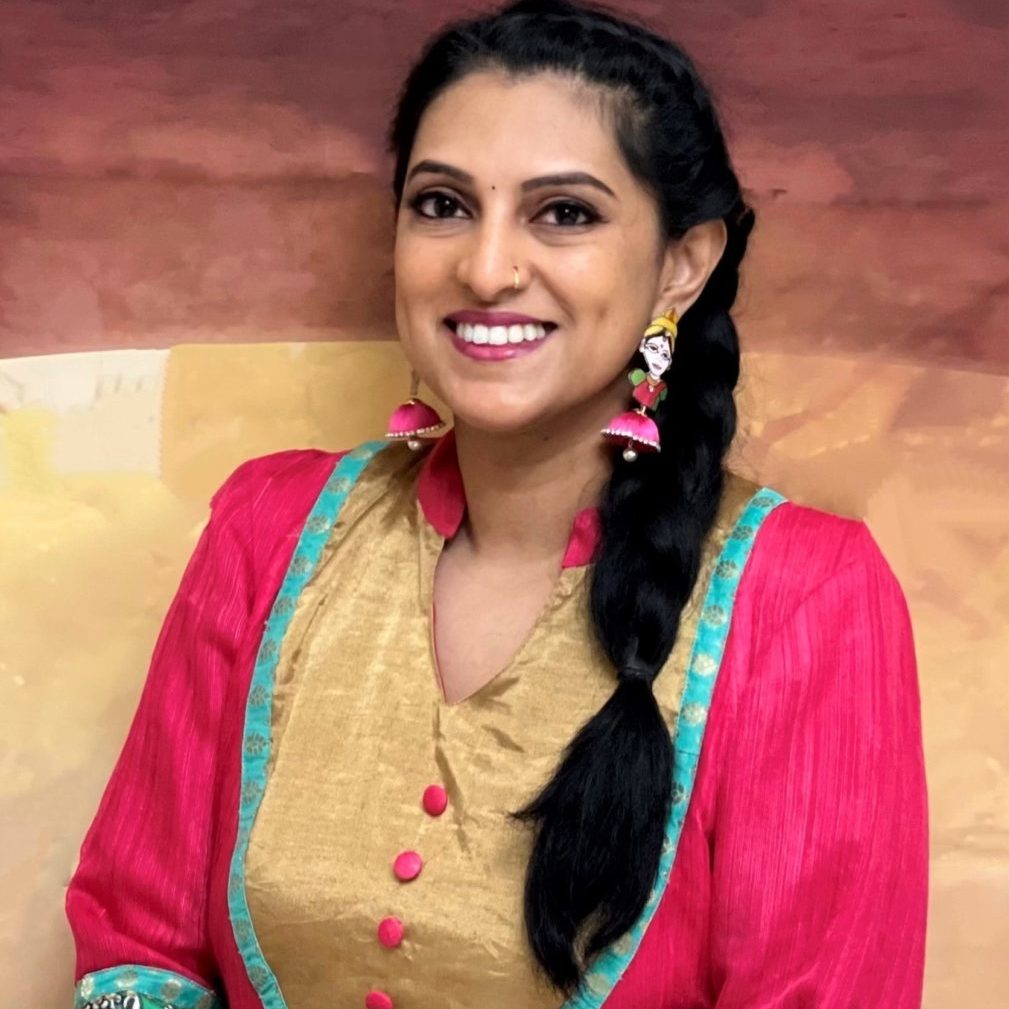
Jewelry and Science
Integral to South and Southeast Asia are their deep connections to the history of science. One of the practices that comes from these deep roots is the wearing of a single piece of jewelry (such as gold or silver, or gemstones) on a specific part of the body (such as the nose, ear, toe or finger). This practice in particular has scientific and logical reasoning behind it. In addition to symbolizing wealth, wearing jewelry has also helped to embellish or to heal and protect the wearer in line their cultural and scientific beliefs.
A New Trend
In recent times, art jewelry using eco-friendly materials has become trendy and affordable, and serves as a unique gift to our loved ones as the wearer is able to cherish the gift forever. I use a variety of sustainable materials, such as clay, stone, paper, wood, thread and fabric, in making my art jewelry. A key component in the making my jewelry comes with the selection of a unique concept and then the painting of the design onto a piece of fabric – making it an exquisite statement piece of art jewelry. Through research and my passion for fabric painting over the past few years, I have developed my skills in art.
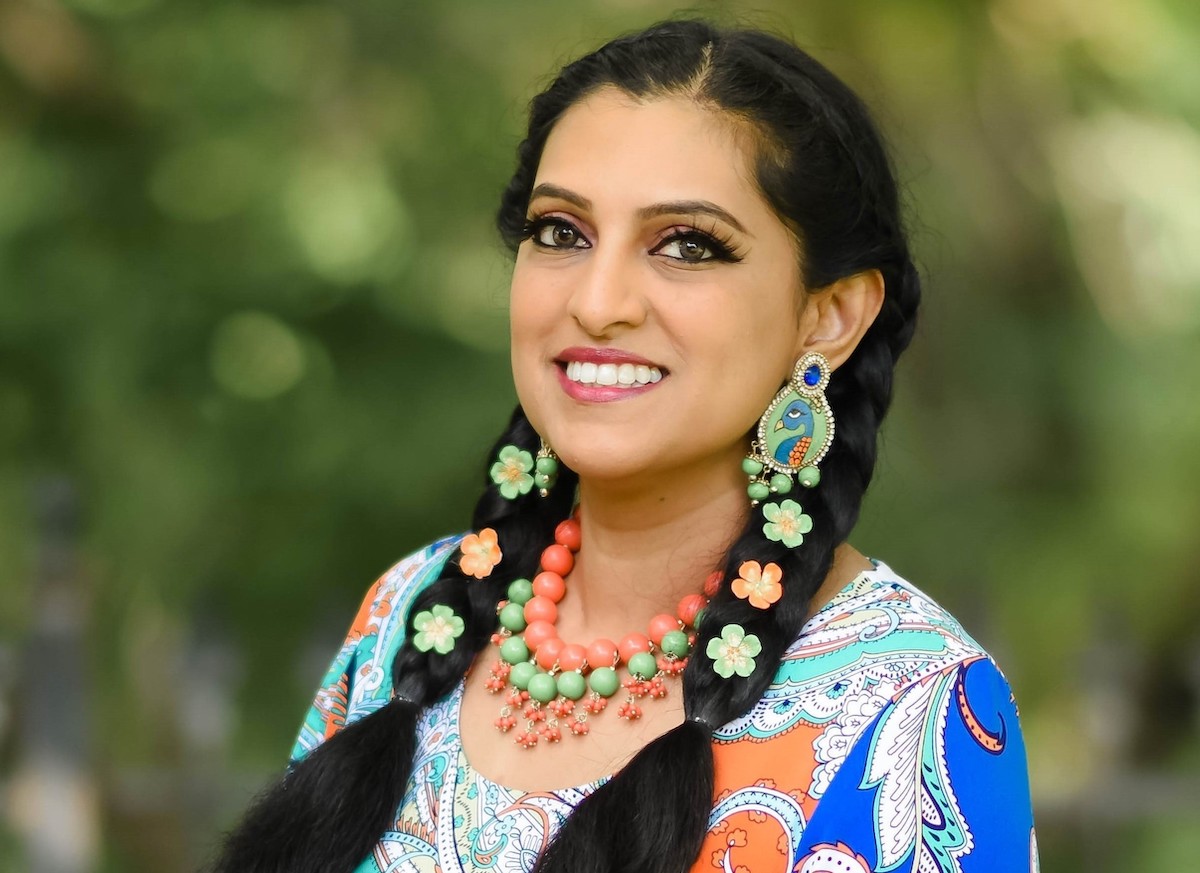
Symbols Explained
Peacock
The Mayil piece (“Mayil,” means peacock in the Tamil language) showcases the motif of a painted peacock on earrings. The peacock has different meanings in different cultures around the world. However, in general, it symbolizes freedom, self-expression, spirituality, integrity, pride, love, and an adornment to feminine beauty. The metallic colors I used to paint the peacock on the fabric and the shimmering white stones that go around the earrings, along with small wooden beads hanging at the bottom, make this piece both vibrant and elegant. Different-sized painted wooden beads were used to make the neck piece, while hand-painted paper flower hairpins were used as a matching hair accessory.
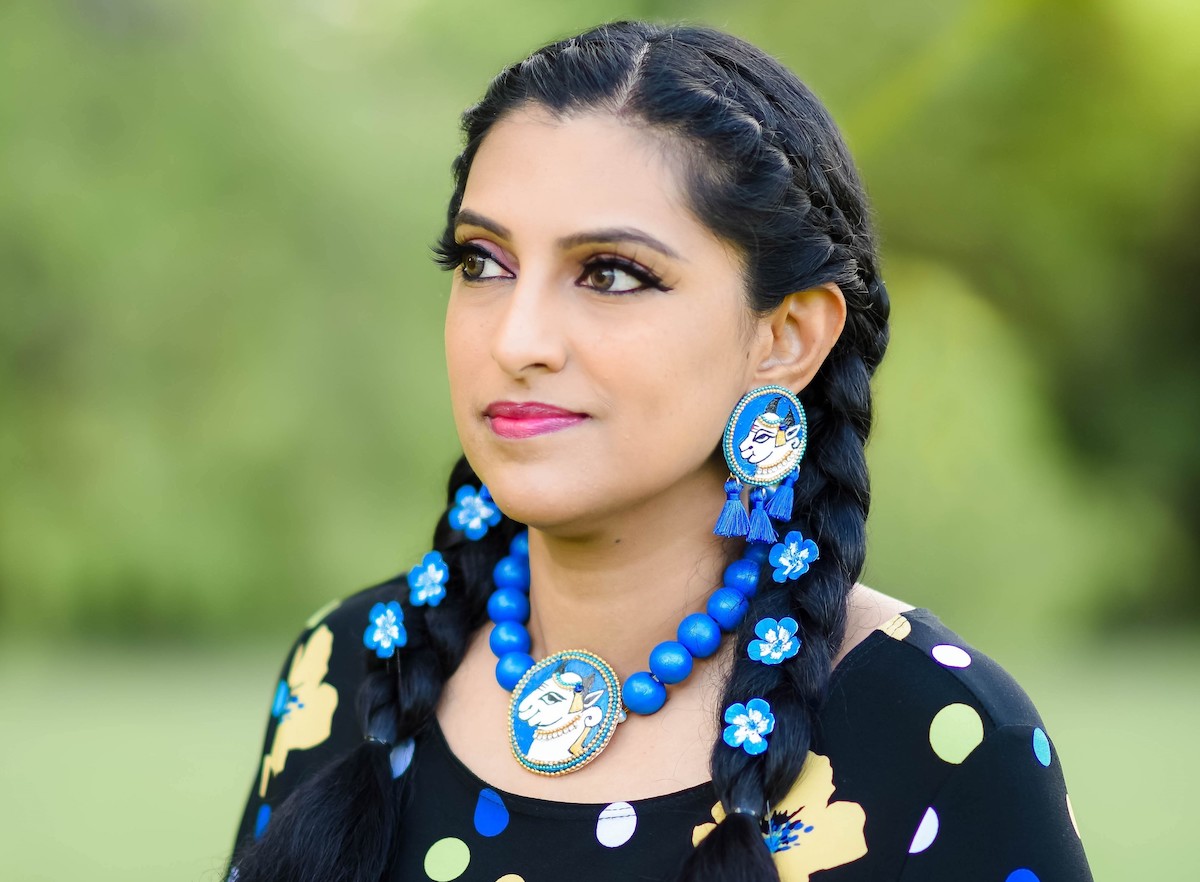
The Bull
The earrings and the choker I named “Kalai” (bull in Tamil) symbolize stability, power, confidence and masculinity. Vibrant and large painted wooden beads are used to make the choker. Silk thread tassels are attached to the bottom of the earrings to enhance their richness, while hand-painted paper flower hairpins are used as a matching hair accessory. Among the different faunas found in nature, I chose the peacock and the bull in my jewelry as they play an integral part in the land where I was born and raised.
Bobble Head Doll
The “Thanjavur Thalaiyatti Bommai” (Thalaiyatti meaning bobble head and Bommai meaning doll) is known for its uniqueness and cultural beauty. In my piece, the facial gesture of the dancing girl symbolizes joy, diplomacy and native art. The hand-painted head and abdomen is attached to a dome-shaped wooden piece that is covered with silk threads.
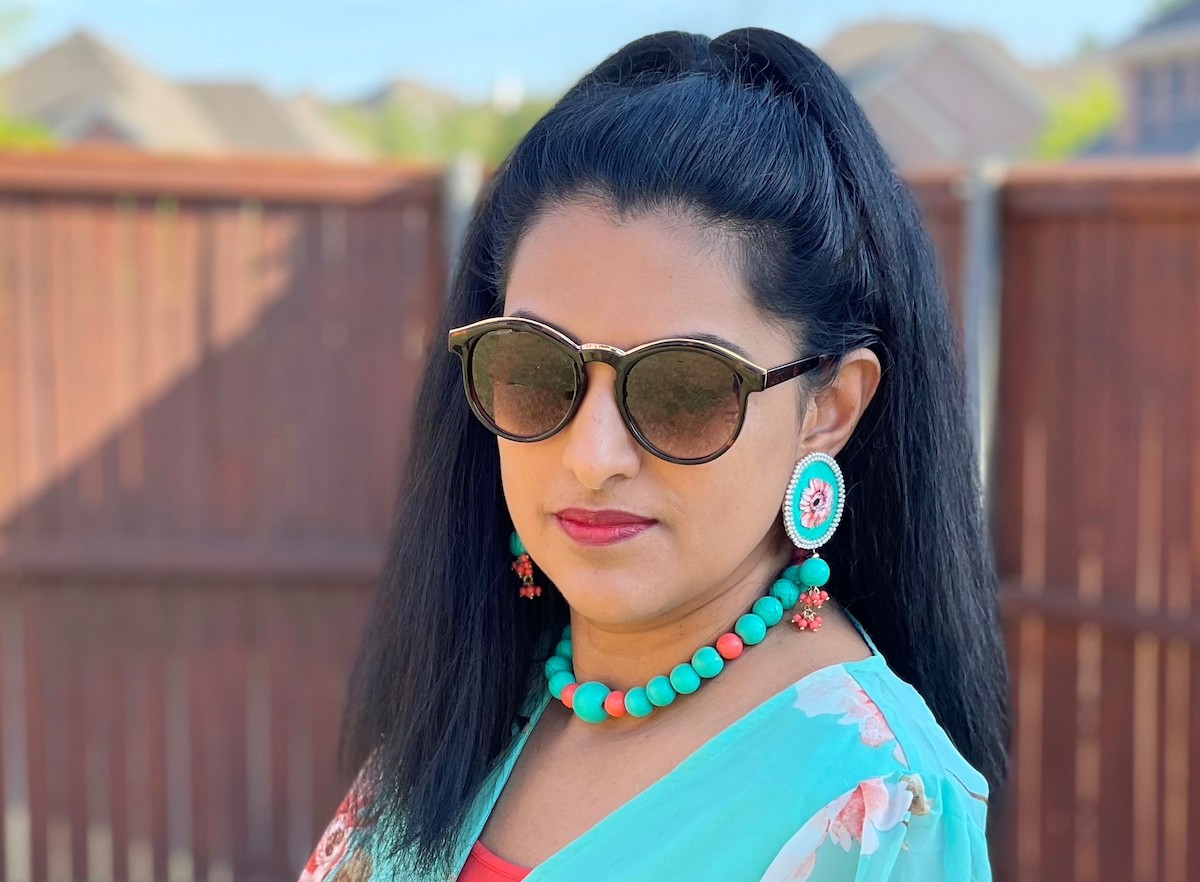
Appropriate for All Cultures
All of these art jewelry pieces go well with any Western or traditional Asian outfit. As there is only a limited supply of jewelry that is both durable and nature-friendly, I want to ensure that my work fits into this category. Today, it is something that I emphasize and integrate throughout my different pieces.
A great advantage of art jewelry is that it gives the creator the privilege of designing his or her own creation using materials that are affordable to purchase, and the creative ability to paint a motif that provides a deep understanding of the symbolism of people following different cultures and traditions. The resulting piece is then appreciated by the wearer for both its uniqueness and beauty — that will last a lifetime.
The Future
One of my future goals is to do more research on finding alternatives to replace even a single piece of non-ecofriendly item used while making the jewelry, and also to create a public awareness about the importance of using sustainable materials. Apart from the three motifs that I have explained in detail, I have also showcased motifs found in nature, including flowers, the sun and fish.
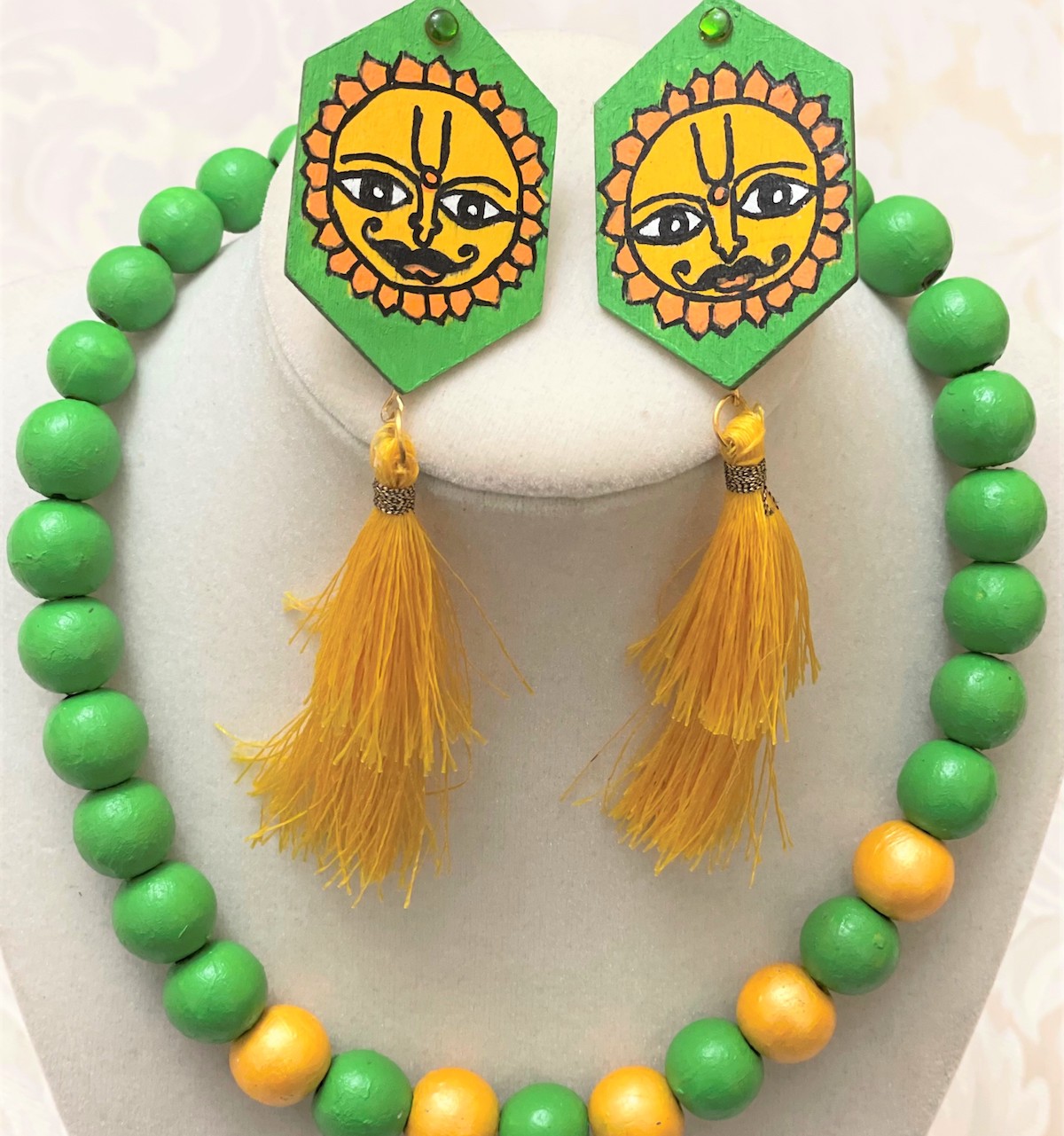
Cover photo courtesy Arts by Jaya
Jayashree Krishnan is an Indian-American educator and jewelry designer based in Dallas, Texas. She is the founder of “Arts by Jaya,” a home-based art studio where children learn a variety of creative arts and crafts. Krishnan has also conducted several Asian arts and crafts workshops for young children in camps, schools and community centers. Follow her on Facebook.














